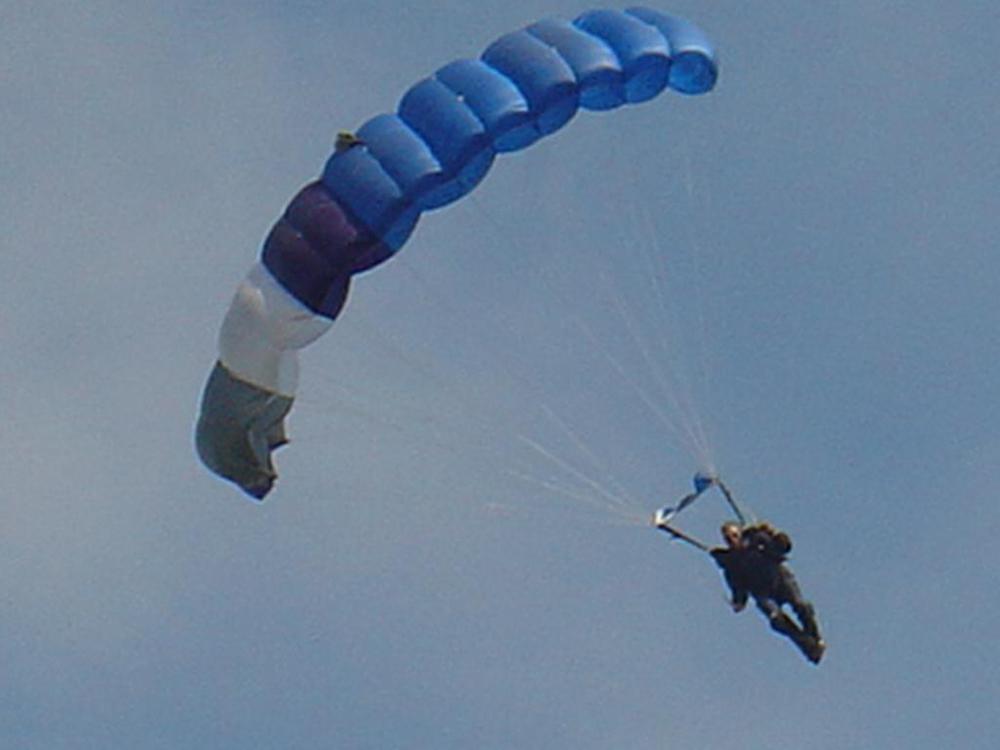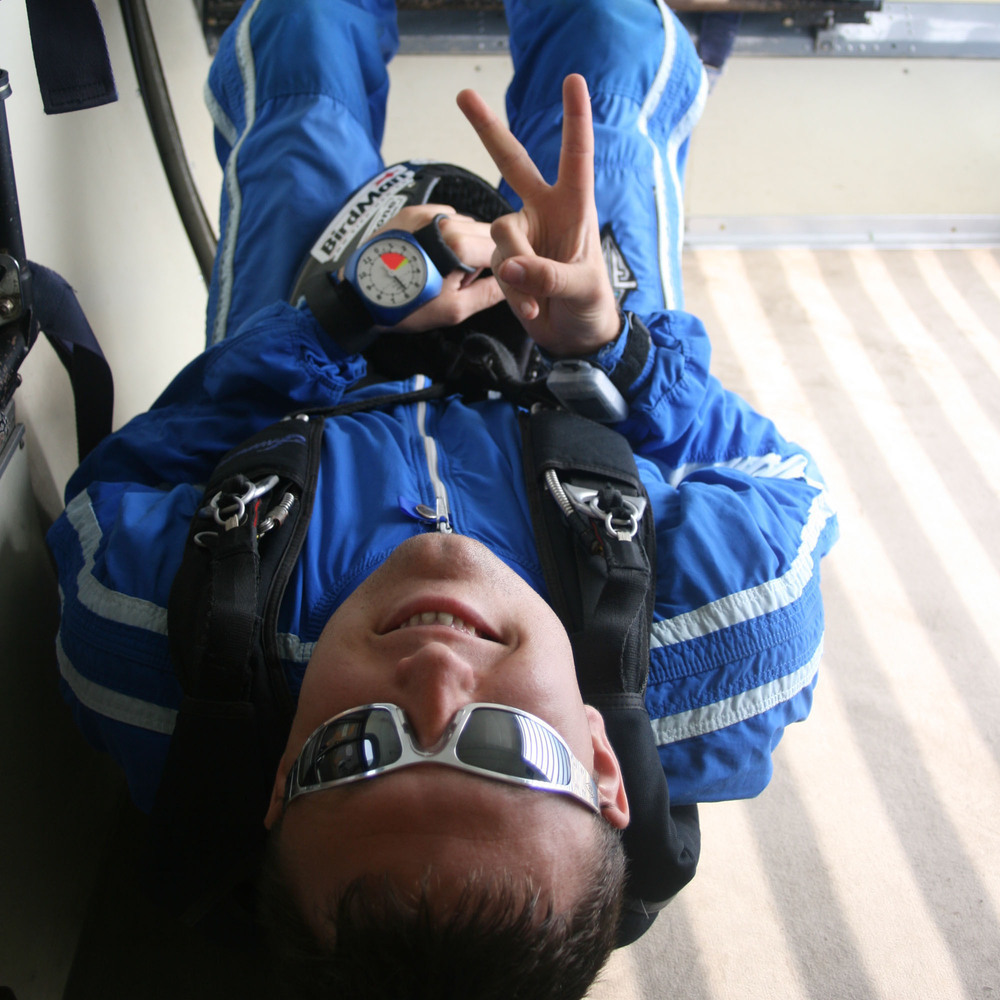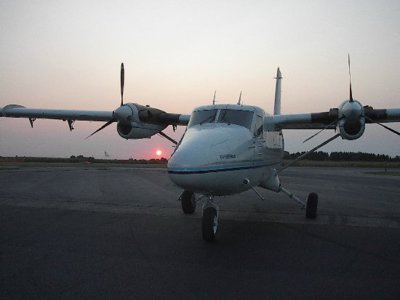Recommended Posts
MarkM 0
quade 4
QuoteI once watched a guy test out his new BASE rig from an Otter at 500 feet. Illegal? Yes. Dangerous? Less so that a tower.
Just a point of clarification for people that wouldn't know.
The only thing that would have technically been in violation of the FARs would be that it was a non-TSOed rig with only one (also probably not TSOed) canopy in it.
It most definately would be in violation of the BSRs, but that's not quite the same thing as illegal.
Well, on second thought, you probably could also throw in an FAR 104.5 violation if you really wanted to.
The World's Most Boring Skydiver
A better synonym for "illegal" would be "unpopular."
First Class Citizen Twice Over
tombuch 0
QuoteI once watched a guy test out his new BASE rig from an Otter at 500 feet. Illegal? Yes. Dangerous? Less so that a tower.
Quote
QuoteA lot of people confuse the word "illegal" for "dangerous" or "bad."
A better synonym for "illegal" would be "unpopular."
Using a BASE rig when jumping from an airplane is illegal. Check FAR 105.43. A skydiver must use an "approved" single harness dual-parachute pack. There is only one single harness dual parachute BASE rig, and it is not approved under the regulation.Tom Buchanan
Instructor Emeritus
Comm Pilot MSEL,G
Author: JUMP! Skydiving Made Fun and Easy
petur 0
QuoteI once watched a guy test out his new BASE rig from an Otter at 500 feet.
Just wondering... Is it any better to "test-jump" gear from 500 ft. than a safer altitude?
P.
"It Hurts to Admit When You Make Mistakes -
But When They're Big Enough, the Pain Only Lasts a Second."
cpoxon 0
quade 4
The World's Most Boring Skydiver
quade 4
QuoteA lot of people confuse the word "illegal" for "dangerous" or "bad."
A better synonym for "illegal" would be "unpopular."
No, I think a much better idea would be for people to understand the diffferences between being legal and safe.
Just because something is legal doesn't make it safe.
Just because something is illegal doesn't make it unsafe.
For instance, there is no FAR that prevents a glorly seeking whuffo parent from putting his 10-year-old into a TSOed rig and letting him make his first jump, a solo balloon jump from 500 feet, on a moonless night. This would be, according to the FARs, -completely- legal but I'm guessing -probably- not very safe.
(On second thought, a really pissy FAA inspector probably would throw a 91.13 and 105.4 at the balloon pilot and some whiney-assed social services agent would probably have something to say about child endangerment. Of course, those are -subjective- laws.)
The World's Most Boring Skydiver
PhreeZone 20
And tomorrow is a mystery
Parachutemanuals.com
QuoteHmmm... how do you do TSO tests?
WHAT???!!!!! You don't know???!!!!!
They are done with test dummies. C23d describes it. I would imagine that PIA has much more info on it.
Chris
PhreeZone 20
I've seen a lot of photos of some various test programs including the p124 project. I also know they used used a live jumper for some of the later tests of that system.
And tomorrow is a mystery
Parachutemanuals.com
skymut 0
Quote
Quote
***
Ah yes. The reason we all have an altitude below with we go straight to the reserve is
a. The reserve is designed to open faster
b. The reserve is packed by someone specially trained - it should be
somewhat more reliable than a main.
c. They're 7-cells, i.e. typically more docile than our mains - so less likely to have squirrely openings and less likely to mal.
d. Most people pack their mains to open softly (slowly). Reverses are packed to OPEN. I believe 300 feet is what is required to pass the TSO - most open faster than that.
e. A reserve has a freebag - i.e. the bag isn't attached to the parachute. This can help if you open unstable or something there is more of a chance the parachute will open even if part of the system is wrapped around an arm or a leg.
So in an emergency when you need a canopy NOW, your reserve is a more reliable choice. At some altitude for everyone, a bailout would go straight to the reserve for the above safety reasons. You wouldn't have time to implement emergency procedures anyway (again, this altitude varies with the person).
I would think that one more reason to go to the reserve might be because in an emergency situation where you are low, you don't have time to really scope/spot your landing area, so you probably want the most docile canopy above your head.
In some instances, your landing area will not be as ideal as the landing area at the dz, it might be tight with lots of obstacles, possibly a plowed up field with lot's of deep trenches etc. etc. Of course, all this depends on how comfortable/how good of a canopy pilot you are. Personally, I would rather be under my larger, more docile reserve.
On the other hand, you canopy jocks who fly sub-hundred sq ft mains probably don't have a much larger and docile reserve.
Matt
A well-informed person is somebody who has the same views and opinions as yours.
billvon 3,173
>And each one, as different and amazing as they are,
>all stress.... safety.
I think you might have missed some eras. The first 10 years after WWII saw the use of statlc line military rigs for freefall use, with somewhat marginal results. The safest thing to do would have been to use the gear for what it was designed for (static line jumps) - but people wanted to freefall.
The 70's saw a lot of drug and alcohol use in skydiving. That's where the term "safety meeting" came from. This dropped off quite a bit, but continues today in some places (ask around about "the sportsman's club" at a certain DZ.)
Today we have freeflyers who intentionally exceed the limits of their equipment and swoopers who jump canopies that are fatal if you make even a minor mistake. Safety is always an issue, but is often not stressed very hard (if at all.)
>When most recommendations for
>cutting away and getting under a reserve, set a hard deck for that, >at above 1000 feet, then I just don't get the logic, in exiting at 50 %> or 75% of that altitude...
Keep in mind that those altitudes were set given inaccurate skydiving altimeters, at freefall speeds, after a skydive. Exiting from an aircraft and opening immediately is a while different ballgame.
>I have not yet made a base jump. I would like to.
Beware, then, because there may be people out there who apply the same logic to you - "there's no logic in jumping without a reserve! There's a reason we have them, and jumping without one is idiotic."





.thumb.jpg.4bb795e2eaf21b8b300039a5e1ec7f92.jpg)
And each one, as different and amazing as they are,
all stress.... safety. When most recommendations for
cutting away and getting under a reserve, set a hard deck for that, at above 1000 feet, then I just don't get the logic, in exiting at 50 % or 75% of that altitude... that's all. Hey man when the ceiling was at 1500 feet, we just didn't jump....
One of the great aspects about this amazing sport/recreational activity that we all share, is the wonderful variety of self expression and individuality
which is possible at all times..on and above a Drop Zone.......maybe "idiocy" was to harsh a term (if the alt. was 1250 feet I may have said "crazy" but the 750 ft...pushed me over the edge. hahaha).
I have not yet made a base jump. I would like to.
I am not afraid (I think). 'Cause I also come from an era which stressed, accuracy landing, flying a canopy at slower speeds, and touchdowns within 1 meter of your target,,,,,,,I hear that can come in handy on a BASE jump....but when in a plane, my motto would be "The more altitude the better"!!!!!
Share this post
Link to post
Share on other sites